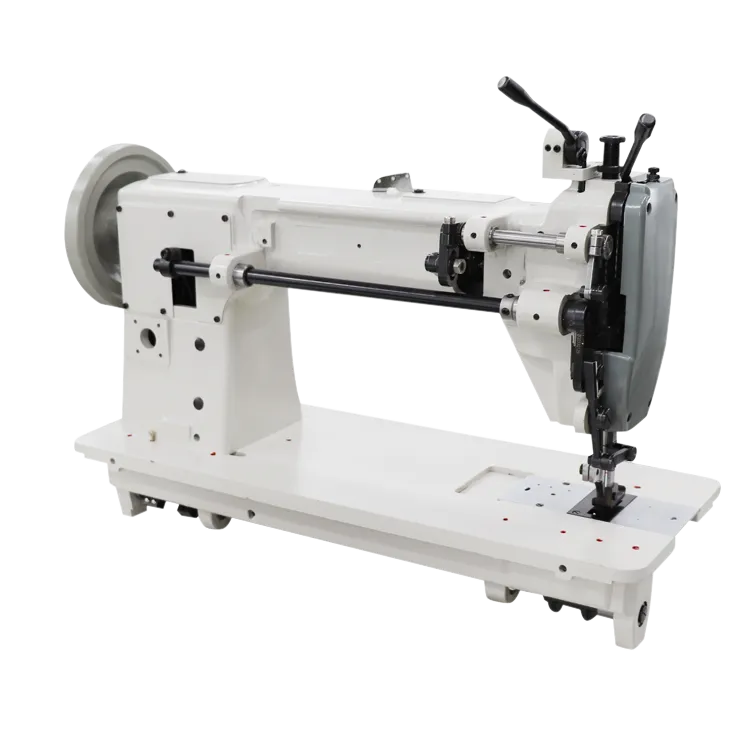How to Successfully Sew Leather Using a Standard Sewing Machine for Best Results
Sewing Leather with a Regular Sewing Machine A Practical Guide
Sewing leather has often been regarded as a daunting task, especially for those who primarily use a regular sewing machine for fabric projects. However, with the right techniques and tools, it is possible to successfully sew leather using a standard sewing machine. This article aims to provide a comprehensive guide on how to do just that, enabling you to create beautiful and durable leather projects.
Understanding Leather Types
Before you begin sewing, it’s important to understand the type of leather you’ll be working with. Leather comes in various forms, including full-grain, top-grain, corrected-grain, and bonded leather. Full-grain leather is the most durable and has the most natural look, while bonded leather is made from scraps of leather and is less expensive but also less durable. For beginners, it is advisable to start with medium-weight leather, which is easier to handle.
Preparing Your Sewing Machine
Not all sewing machines are designed to handle leather, but many regular sewing machines can be adapted. Here are some essential adjustments
1. Needle Selection Use a leather needle, which has a wedge-shaped point that easily penetrates the material without causing damage. A size 90/14 or 100/16 needle is typically suitable for most leather projects.
2. Thread Choice Opt for polyester or nylon thread, as these are stronger and less likely to break than cotton thread. Ensure the thread weight is compatible with your needle size.
3. Tension Settings Adjust the tension settings on your sewing machine. Leather requires a slightly looser tension to avoid breaking the thread and to accommodate for the thickness of the material.
4. Walking Foot If possible, use a walking foot attachment. This helps to feed the leather evenly through the machine, reducing the chances of slipping and uneven stitches.
Cutting and Pinning Leather
sew leather with regular sewing machine

Leather should be cut with precision, as it does not fray like fabric. Use a rotary cutter and a cutting mat for clean edges. When pinning leather, avoid using standard pins, as they can leave permanent marks. Instead, use clips or specialized leather clips that hold the pieces together without causing damage.
Sewing Techniques
When you start sewing leather, it’s best to take your time and practice a few techniques
1. Test Stitches Begin with scrap pieces of leather before working on your final project. This allows you to adjust settings and practice your technique.
2. Sewing Speed Maintain a moderate sewing speed. Leather can be thick and tough to maneuver, so patience will help achieve a smoother finish.
3. Backstitching Always backstitch at the beginning and end of your seams to secure them firmly, preventing any unraveling.
4. Seam Finishing While leather doesn’t fray like fabric, you may still want to finish seams for aesthetics. You can use leather cement or particularly high-quality leather bindings for a polished look.
Finishing Touches
Once your project is sewn, it’s time for finishing touches. Trimming any excess thread and using a leather conditioner will enhance the appearance of the leather and provide some protection against wear.
Conclusion
Sewing leather with a regular sewing machine is indeed possible, provided you equip yourself with the right knowledge and tools. By understanding the characteristics of leather, properly preparing your machine, and applying the right techniques, you can create stunning leather items. Whether you're crafting bags, wallets, or custom garments, sewing leather can be a rewarding and creative experience. So gear up, practice, and unleash your creativity on leather!
-
Leather Sewing Machine: The Industrial Standard for Tough MaterialsNewsJul.18,2025
-
Sail Making Machine: Heavy-Duty Stitching for Industrial and Marine NeedsNewsJul.18,2025
-
Sling Sewing Machine: The Backbone of Heavy-Duty FabricationNewsJul.18,2025
-
Leather Sewing Machine: Precision for Heavy-Duty StitchingNewsJul.18,2025
-
Big Bag Sewing Machine: Powering the Future of Bulk PackagingNewsJul.18,2025
-
FIBC Sewing Machine: Essential Equipment for Bulk Bag ProductionNewsJul.18,2025
-
Heavy Duty Leather Sewing Machine: A Must-Have for Professional LeatherworkNewsMay.28,2025





























